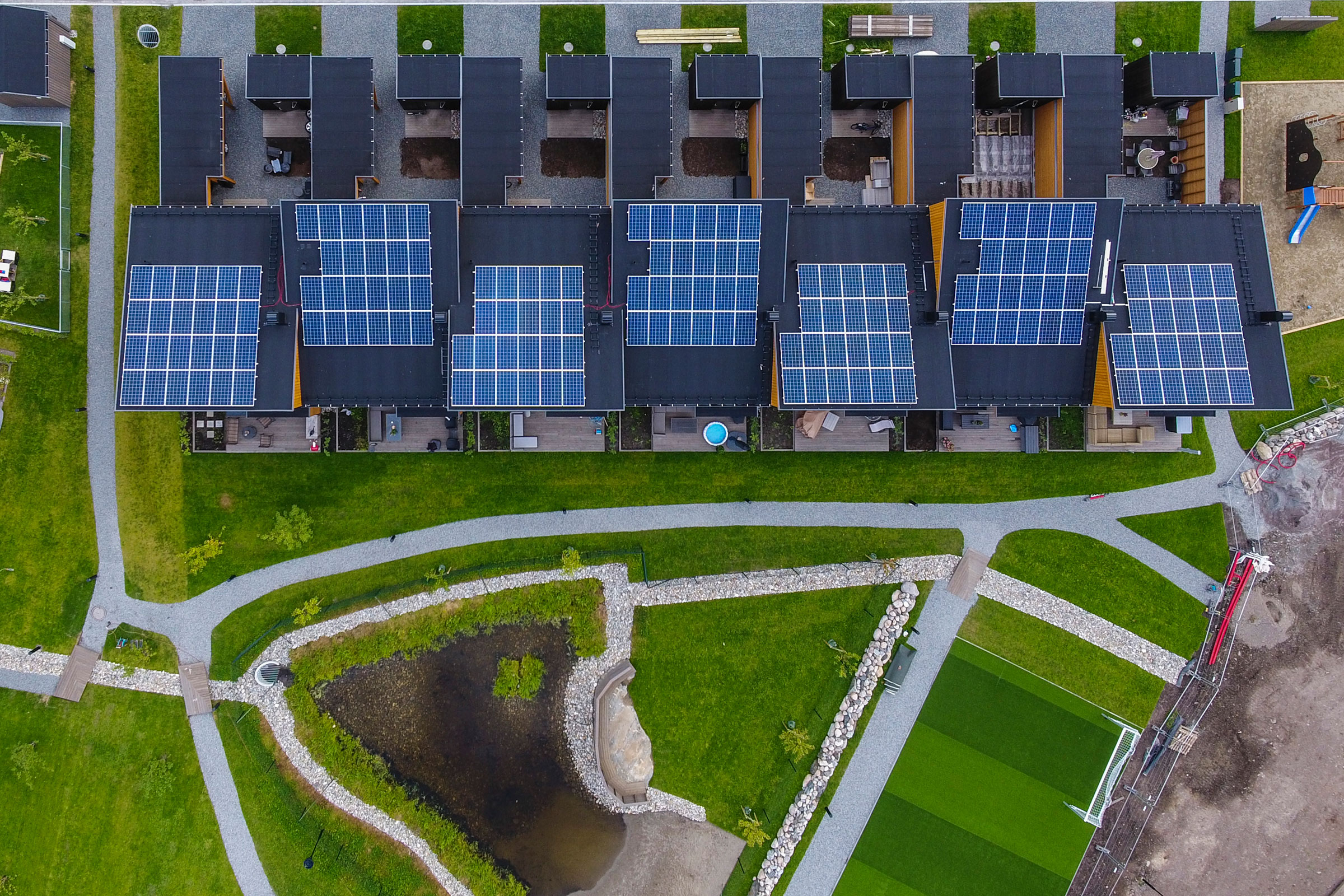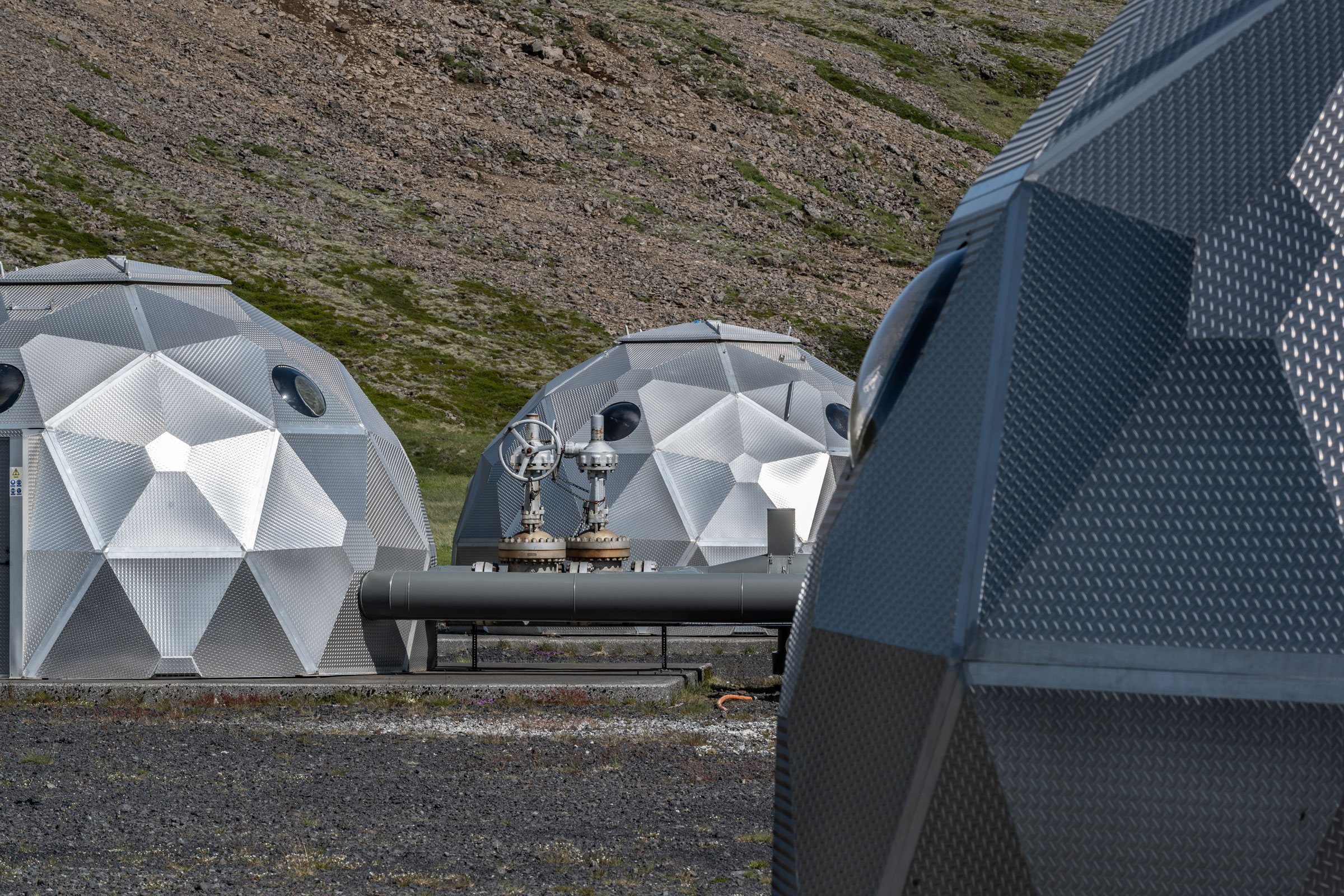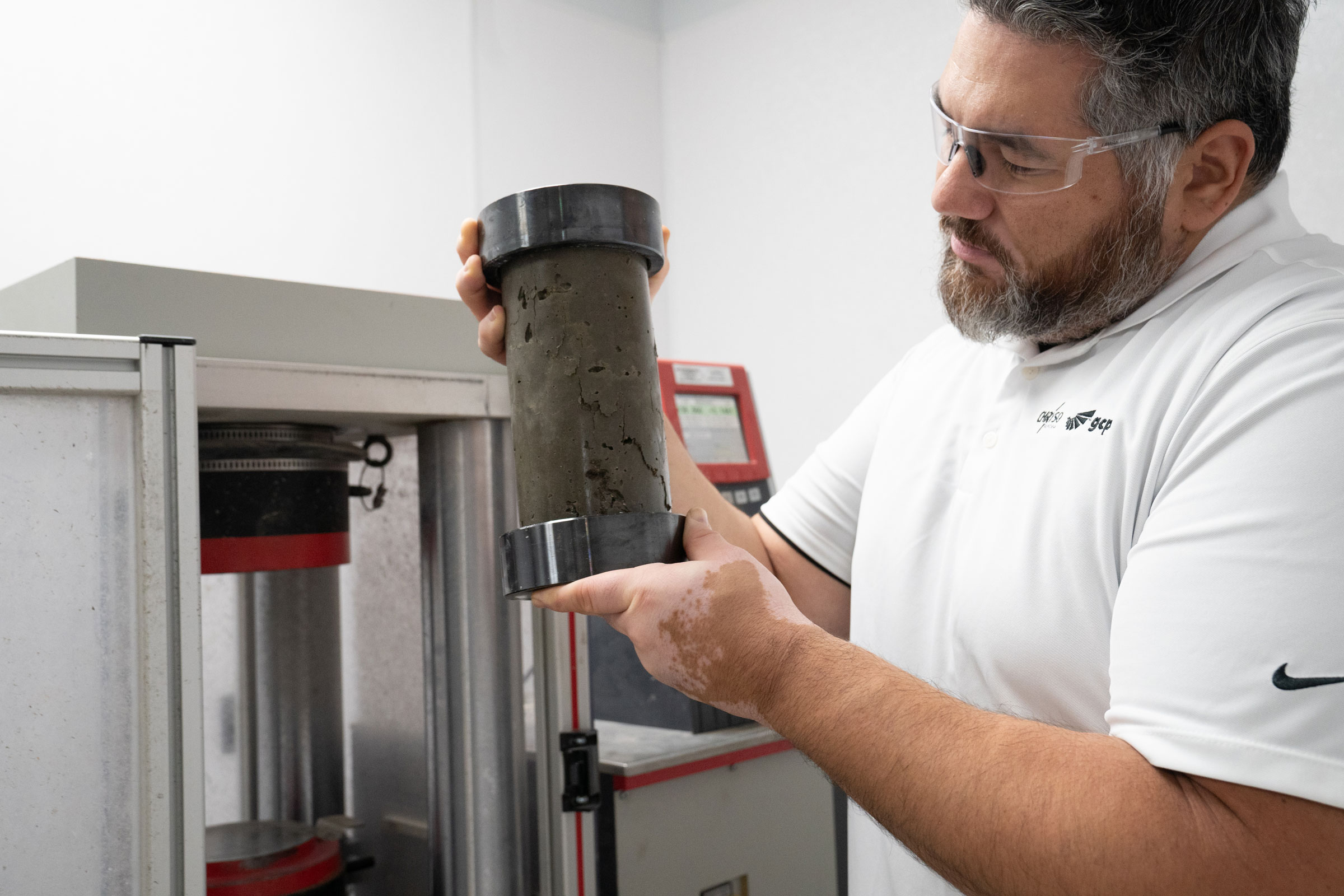Story at a glance:
- Carbon neutral refers to the balancing of carbon emissions produced with the amount of carbon removed from the atmosphere, whereas net zero refers to the balancing of all GHGs produced with those removed from the atmosphere.
- Net zero initiatives typically prioritize emissions reduction strategies while carbon neutral programs are often focused on removing or offsetting CO2.
When it comes to businesses, industries, and even governments setting climate goals, the terms “carbon neutral” and “net zero” are often used interchangeably with one another—and while it’s true that the concepts are similar, there are a few important distinctions.
In this article we’ll take a look at the differences between carbon neutrality and net zero, both in the broad sense and through an architectural lens.
Carbon Neutral Vs. Net Zero: What’s the Difference?

The new McDonald’s at Walt Disney World Resort in Florida was designed as a net zero energy building certified by the International Living Future Institute. Photo by Kate Joyce Studios
Carbon neutrality and net zero are often used interchangeably—and while the two terms are similar, they refer to separate concepts.
Carbon Neutral
Carbon neutral describes a state in which the amount of carbon emissions generated by an entity are balanced by the removal of an equivalent amount of carbon emissions from the atmosphere. Carbon neutrality may be achieved through a variety of means including the reduction of CO2 emissions at their source (e.g. transitioning to renewable energy), removal and storage of CO2 emissions, and through the support of offset programs that remove and store CO2 emissions.
Most carbon neutrality initiatives prioritize the removal or offset of CO2 emissions over the reduction of said emissions, effectively allowing entities to claim carbon neutrality without actually addressing their own emissions. This has often been criticized as supporting a “business as usual” mindset that does not actively encourage entities to make sustainable changes to their operations.
Net Zero
Net zero, on the other hand, refers to a state in which an entity’s carbon emissions—as well as all other greenhouse gas (GHG) emissions—are reduced to as close to zero as possible, with any remaining emissions permanently removed from the atmosphere. According to the Science Based Target Initiative’s Corporate Net Zero Standard, an entity can only achieve net zero by reducing at least 90% of their GHG emissions.
Because net zero initiatives place a much higher emphasis on emissions reduction strategies, they are considered to be more effective than carbon neutral initiatives.
Why is Carbon Neutrality Important?

Zibi sets its sights on becoming Ottawa’s first carbon-neutral community while quite literally bridging cities, provinces, and founding nations. Rendering courtesy of Zibi
Carbon neutrality is still important to strive for. Carbon dioxide is the single greatest contributor to climate change, and reducing the amount present in the atmosphere is absolutely crucial to slowing, stopping, and eventually reversing its detrimental effects.
Striving for carbon neutrality is considered to be a step in the right direction when it comes to an entity’s efforts to reduce their environmental impact, but should ultimately be part of larger efforts to achieve net zero emissions rather than treated as an end goal in and of itself.
Why is Net Zero Important?

The Advanced Technology and Applied Science building at Saddleback College is designed to achieve Zero Net Energy with a LEED Gold rating using passive strategies integrated into the design of the building to minimize energy consumption. Site orientation, geometric relationships between adjacent masses, and an aggressive self-shading strategy all lower loads on the building. Rendering courtesy of HED
The pursuit of net zero is important for all the same reasons achieving carbon neutrality is important and then some. We’ve already established that carbon dioxide is one of the leading contributors to anthropogenic climate change, but it isn’t the only contributor. Other GHG emissions like methane (CH4), nitrous oxide (N2O), and even fluorinated gasses (F-gasses) play a significant role in furthering climate change by absorbing solar energy and trapping it in the atmosphere. Of these, methane is the most damaging—in fact, methane is actually 80 times more potent at warming than CO2 over a 20-year period.
If we hope to avoid total climate catastrophe and ensure the planet’s livability for future generations, global temperature increase must be limited to 1.5℃ above pre-industrial levels.
Reducing GHG emissions at the source is integral to mitigating and eventually reversing the worst effects of our drastically changing climate, and achieving net zero at the global scale is absolutely necessary because it represents the point at which global warming effectively stops. Current estimates suggest that in order to avoid crossing the 1.5℃ threshold, global emissions must be reduced by 45% by 2030 and net zero must be reached by 2050.
Pathways to Net Zero & Carbon Neutrality
While net zero and carbon neutrality may be different in definition and scope, both can be reached using the same basic pathways—reduction, removal, and offsets. Before an entity can pursue these strategies, however, they must first calculate their emissions baseline—a process known as greenhouse gas accounting—to figure out what emissions they are responsible for.
Emissions Reduction

One of the most effective emissions reduction strategies is transitioning away from fossil fuels and investing in clean, renewable energy. Photo courtesy of Otovo
Emissions reduction refers to when companies and other global actors actively take steps to reduce their emissions using science-based strategies. Any emissions that cannot be cut, or that would be extremely technologically impractical to reduce, are referred to as “residual emissions” and must be balanced by either removal or offset programs.
Carbon Neutral
Because the burning of coal, oil, natural gas, and other fossil fuels is the leading producer of CO2, the most effective carbon reduction strategy is transitioning away from fossil fuel energies and investing in clean, renewable energy sources—a process otherwise known as decarbonization.
Carbon emissions can also be reduced or prevented entirely by improving the overall energy efficiency of existing systems, processes, and products.
Net Zero
In addition to decarbonization strategies, net zero initiatives can reduce the production of nitrogen oxide emissions by:
- Using low-nitrogen fuels
- Reburning technology
- Flue gas treatment
- Low-excess-air firing
- Catalytic combustion
Net zero initiatives can also reduce the amount of methane emissions entering the atmosphere by:
- Adopting an alternate wetting and drying approach to paddy rice farming instead of the continuous flooding of fields
- Managing manure more effectively
- Installing proper leak detection systems along natural gas pipelines
- Construction of anaerobic digestion facilities to break down organic waste rather than sending it to landfills
- Rehabilitation of open dump sites into sanitary landfills
- Landfill gas recovery
Emissions Removal & Storage

Carbix specializes in direct air carbon capture, a carbon removal technique that removes CO2 from the atmosphere by injecting it into geological formations. Photo courtesy of Carbfix
Companies can also pursue emissions removal initiatives, or deliberate activities that actively remove or absorb GHGs from the atmosphere and store them for the long term. Emissions removal initiatives are only allowed under BSI and ISO standards if they have the same permanence as the GHGs they remove. Permanence means the proposed program stores captured GHGs for the same period of time those GHGs would naturally persist in the atmosphere.
Because different greenhouse gasses have different lifespans, removal projects can vary in the length of time they must last for. A carbon dioxide removal program, for instance, would have to last between 300 and 1,000 years, whereas a program that removes nitrous oxide would only have to last between 100 and 130 years.
Carbon Neutral
Some of the most common carbon emissions removal/storage strategies focus on expanding and rehabilitating natural carbon sinks, or those natural environments capable of absorbing large amounts of CO2. These strategies include practices like reforestation, agroforestry, coastal wetland restoration, ocean fertilization, and carbon sequestration in grasslands and croplands.
A more recent innovation in large-scale carbon removal is direct air carbon capture. Direct air carbon capture is a technique that removes CO2 from the atmosphere before compressing it and either injecting it into geological formations or using it to manufacture products like concrete. “The direct air capture method is important for capturing emissions that cannot be captured directly, such as CO2 emissions from airplanes,” Sandra Ósk Snæbjörnsdóttir, the geoscientist at the helm of Carbfix, told gb&d in a previous article.
Based in Iceland, Carbfix is a pioneer in the field of direct air carbon capture. Iceland is uniquely suited to this method thanks to its ample supply of basalt, a type of volcanic rock that is ideal for direct air carbon capture because it contains many of the necessary metals for efficient mineralization. Once injected, the compressed carbon forms carbonate rock in just two years’ time. Since Carbfix started in 2014, the company has successfully stored over 70,000 tons of CO2.
In addition to their operations in Iceland, Carbix also has field sites in Cornwall, United Kingdom and St. Gallen, Switzerland, though the company has plans to expand beyond Europe. “Carbfix wants to establish strategically located carbon storage hubs around the world, which can get rid of millions of tons of CO2 from industrial clusters, thereby maximizing the storage potential,” Silja Y Eyþórsdóttir, digital media specialist at Reykjavik Energy, previously told gb&d.
Net Zero
Net zero initiatives can make use of all of the same strategies for removing carbon from the atmosphere but must also find ways to remove, capture, and store other GHG emissions as well.
Nitrous oxides, for example, may be removed from the atmosphere by way of titanium dioxide (TiO2) coatings. Buildings and infrastructure that use paint or materials that contain TiO2 can help remove N2O through photocatalysis, a process that uses light to speed up photolysis, a natural chemical reaction that causes nitrogen oxides to break down. Photocatalysis causes N2O to rapidly convert into harmless, water-soluble nitrate salts that are then removed from the building’s surface by rainfall.
Methane, on the other hand, is much more difficult to remove from the atmosphere and research is ongoing to determine the best methods. One potentially promising solution involves zeolites, a class of crystalline materials found in clay that are capable of absorbing methane from the air, but their efficacy remains to be tested on a large scale.
Emissions Offsets & Credits

An entity may offset its own emissions by supporting carbon removal or reduction strategies elsewhere. Photo courtesy of Western Forest Products
An entity may also offset their own emissions by purchasing credits. While somewhat controversial, these credits allow governments, businesses, and individuals to compensate for their own emissions by actively supporting or funding projects that avoid, remove, or reduce emissions elsewhere. The credit itself is a type of transferable financial instrument that may be bought or sold after certification by a government or independent certification entity. One carbon credit, for example, represents the removal, reduction, or avoidance of exactly one ton of carbon dioxide or its carbon dioxide-equivalent.
Support of future emissions offset programs are treated as a type of note payable. That is, the purchaser of the credit agrees to pay market rate for the credits and receives a guarantee that the purchaser’s present GHG emissions will be offset by an equal amount some time in the future. Emissions offset programs can take the form of any of the aforementioned reduction and removal strategies.
Net Zero & Carbon Neutrality in the Built Environment
The built environment contributes to GHG emissions primarily by way of burning fossil fuels for electrical power. Because fossil fuels emit CO2, CH4, and N2O as they burn, the pursuit of carbon neutrality in the built environment is essentially the pursuit of net zero, and vice versa. As such, carbon neutral and net zero initiatives in architecture are primarily focused on reducing dependency on fossil fuels and improving the overall efficiency of building operations. These strategies include:
Switch to Renewable Energy

The Exploratorium’s move to Pier 15 provides a prime waterfront location for this internationally acclaimed museum of science and perception. The complexity of the program was matched by the challenge of rehabilitating an existing historic structure in the most energy-efficient manner possible. To that end, the building takes advantage of the original pier building’s natural lighting and the water of the Bay for cooling and uses materials that are both sustainable and durable enough to withstand a harsh maritime climate. The result is the country’s largest Net Zero Energy museum. Photo by Bruce Damonte
In order for a building to achieve carbon neutral or net zero status, it must be capable of producing, at the very least, a portion of its own energy via renewable sources. Solar is the most common and often the easiest to integrate, but both geothermal and even wind power are becoming increasingly popular.
The new Exploratorium in San Francisco, for example, was designed by EHDD to Net Zero Energy standards and features a 1.3 megawatt SunPower solar grid composed of 5,874 rooftop-mounted solar panels. Since reopening in 2013, the Exploratorium has generated 85% of its own power, effectively preventing almost 16,186 tons of CO2 from entering the atmosphere.
Use of Passive Design Techniques

Passive design strategies help reduce the SEF Zero Energy Building’s GHG footprint and prevent energy waste. Photo courtesy of Ashley McGraw
Buildings that leverage natural phenomena to their advantage by way of passive systems consume far less energy than those that rely on active systems. Some of the most common passive design strategies include natural ventilation, passive solar design, daylighting, and so on.
The SEF Zero Energy Building in Schnecksville, Pennsylvania—which was actually designed by Ashley McGraw Architects to generate more energy than it uses—makes extensive use of passive design strategies and is oriented so as to make the most effective use of sun and shade. Even the size, spacing, and placement of the building’s windows was informed by solar pathing to maximize natural light admittance and passively regulate interior temperatures.
Improving Insulation & Air Sealing

Aerial view of Ken Soble Tower in Hamilton, Ontario. This project’s cladding design included a 6-inch thick stone wool EIFS system from ROCKWOOL. Photo courtesy of ROCKWOOL North America
A building’s overall energy efficiency can be improved further through the use of rigorous insulation and air sealing technology to create an airtight building envelope that prevents heat from entering or escaping, thereby reducing emissions produced as a result of energy waste. “The building envelope affects approximately 50% of the energy demand of typical buildings,” Sophia Rini, director of public affairs and communications of ROCKWOOL, previously wrote for gb&dPRO. “Therefore, implementing envelope-related energy conservation methods (ECM) are an effective way to reduce energy demand and operational carbon emissions of a building.”
ROCKWOOL is a leading producer of high R-values stone wool insulation products and solutions, of which can help to reduce a building’s heating and cooling costs by as much as 70%. In addition to being incredibly energy-efficient, stone wool insulation is also extremely durable and is entirely recyclable.
Installing Energy-Efficient Appliances

All Going Street Commons homes feature open floor plans, modern, Energy Star-certified appliances, abundant natural lighting, and building systems and finishes to help ensure healthy indoor air quality. Photo by Jillian Lancaster, courtesy of Green Hammer
Installing appliances and other mechanical systems with low-energy requirements can help reduce a structure’s overall energy demands and curb GHG emissions. In fact, Energy Star—an EPA program that promotes energy efficiency—estimates that the installation of ENERGY STAR-certified appliances could help the average household avoid 77,000 pounds of GHG emissions over the products’ lifetimes.
Green Roofs & Living Walls

The new headquarters for The David and Lucile Packard Foundation was designed to serve as a catalyst for broader organizational sustainability initiatives by achieving net zero energy use and LEED Platinum certification. Photo by Jeremy Bitterman
Buildings can also help remove carbon dioxide from the air by way of green roofs and living walls. This is because plants naturally absorb CO2 during photosynthesis, sequestering carbon molecules in their fibers and releasing oxygen molecules back into the air. A recent study has shown that green roofs are capable of absorbing as much as 1.79 kilograms (or about 4 pounds) of CO2 per square meter each year.
What’s more, a green roof—like the one installed at the David and Lucile Packard Foundation’s headquarters in Los Altos, California—also helps naturally regulate indoor and outdoor temperatures, reducing the need for mechanical air conditioning and lessening a building’s overall energy consumption.
Use of Low-Carbon Materials

Photo courtesy of CHRYSO and GCP
Architects can also help design carbon neutral and net zero buildings through the use of low-carbon building materials. This includes materials that are naturally low-carbon—such as mass timber, bamboo, rammed earth, et cetera—as well as low-carbon alternatives to traditionally high-carbon materials, like concrete.
CHRYSO—a company under Saint Gobain Construction Chemicals—is one of the leading providers of innovative chemistry solutions for sustainable construction, particularly as it relates to concrete. Their CHRYSO®Quad solution, for example, allows low-quality, locally sourced sands be used in concrete manufacturing, reducing transportation-related CO2 emissions.
Net Zero & Carbon Neutrality: Are They Enough?
The short answer? Probably not. Most experts agree that simply balancing emissions is not ambitious enough where climate change is concerned, especially if efforts are not also focused on greatly reducing the amount of emissions produced in the first place, as is the case with many carbon neutral initiatives.
Other critiques of carbon neutral and, to some extent, net zero initiatives, focus on emissions removal and offset strategies, as many climate scientists believe encouraging these pathways only delays the adoption of crucial emissions reduction programs. This is especially true of offset credits, which are often accused of promoting greenwashing rather than serving as stepping stones towards widespread emissions reduction efforts.
There are also concerns regarding the current climate pledges set forth by governments, many of which fall far short of what is required to actually reach net zero by the year 2050. Indeed, the current plans of almost all member states who signed the Paris Climate Agreement would actually lead to a 9% increase in global GHG emissions by 2030, according to the United Nations Net Zero Coalition.
The Case for Climate Positive
Combined, global adoption of strict carbon neutral and net zero initiatives might be able to get us to a place where the threat of climate catastrophe no longer looms so large over humanity’s collective head—but it’s not a guarantee. It is for this reason that more and more scientists and climate experts are advocating for the implementation of climate positive initiatives, or strategies that actively remove more GHG emissions from the atmosphere than are produced.
As it stands, only three countries in the world—Bhutan, Suriname, and Panama—have achieved climate positive status, in large part due to their extensive forest cover and relatively low levels of urban industrialization.



